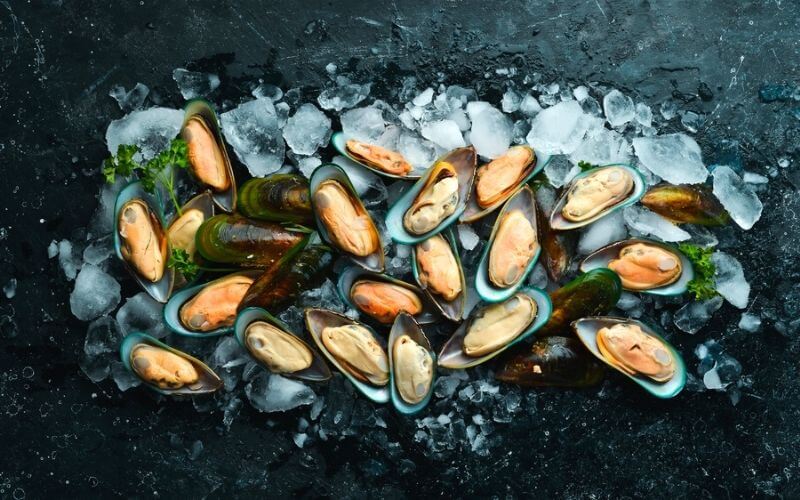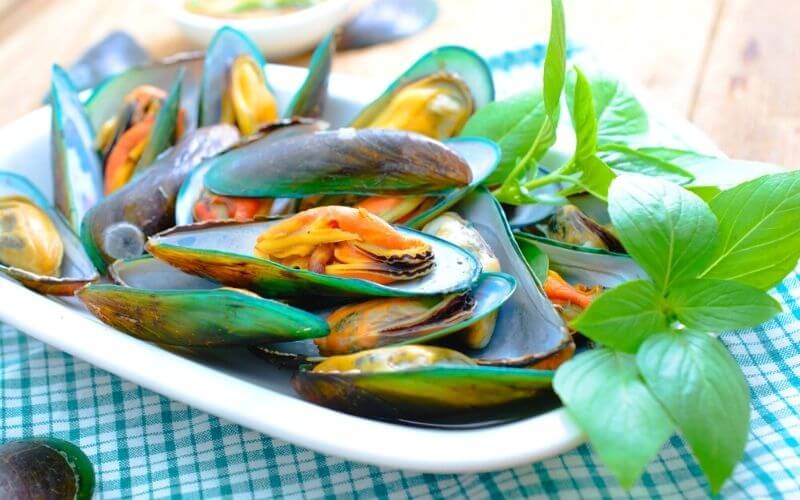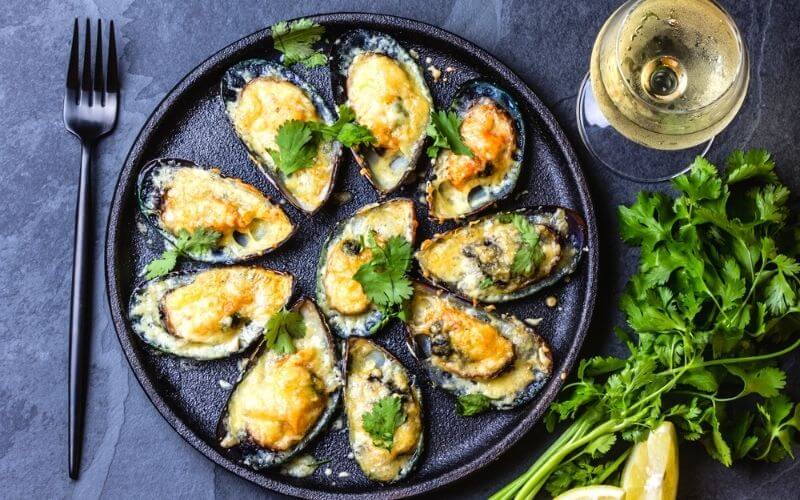Mussels are one of the most popular appetizers at a fancy dinner. When given a choice, most people choose black mussels since these are the kind they are most familiar with.
It helps as black mussels are pretty affordable too! But have you ever wondered about the differences between green mussels vs black mussels?
This article will examine a couple of key differences between these two kinds of mussels. But that’s not all! We’ll also look at how you can cook mussels, and how you can differentiate between mussels, clams, and oysters.
If you want to learn a little more about seafood, you’ve come to the right place!
What are Mussels?

Mussels are a kind of seafood; they are mollusks with a split shell similar to oysters, scallops, and clams. They can live in both saltwater and freshwater, so mussels are pretty widely available. Mussels are a great source of lean proteins, as well as minerals, vitamins, and micronutrients.
Best of all, they are a prime source of iron and contain very little fat or carbs. They are rich in vitamin B12 and encourage the production of red blood cells and keep nerve cells healthy.
Are mussels healthy? All these reasons make them a lot more than a fancy dish on a dinner date─ mussels are super healthy and a great way to lose weight.
Types of Mussels:
There are a couple of different types of mussels. You can find these different kinds based on where you live and the season of the year. These include:
- Black mussels: They are the most common kind of mussels and are pretty small; about 2.5 inches in length. Moreover, they have a mild and light flavor.
- Mediterranean mussels: These mussels are large and plump and are commonly found in summer and early fall.
- Green mussels: Also known as New Zealand mussels, they are very large and have a slightly intense flavor. As their name suggests, they are cultivated in New Zealand and not as easily available as black mussels.
- Blue mussels: They are much smaller than Mediterranean mussels and are sometimes called blue-lipped mussels. In terms of flavor, they are extremely intense and rich.
How are Mussels Different from Other Kinds of Seafood?
Seafood newbies often get confused between mussels, clams, and oysters since they are all bivalve mollusks. Some people even get de-shelled mussels and shrimp mixed up! However, there are a couple of differences among them:
Mussels vs. Clams:
The main difference between clam and mussel lies in where they can be found. Mussels can thrive in both saltwater and freshwater. However, clams can only live in freshwater. Unlike mussels, clams have organs including a heart and circulatory system and parts of a digestive system.
Mussels vs. Oysters:
Mussels have a smooth shell with elongated ends and an oblong shape. However, oyster shells have a dull, rough exterior covered in barnacles. They are also oval-shaped. Oysters are also fleshier and bigger than mussels.
Mussels vs. Scallops:
Scallops burrow under the sand and have one convex shell and one flat shell. Unlike oysters, clams, and mussels, scallops are shucked right after harvest so they don’t stay fresh for long.
Green Mussels vs Black Mussels: How They’re Different

There are a few major ways in which New Zealand mussels vs black mussels differ. Let’s look at green mussels first:
Green or New Zealand mussels are harvested in New Zealand. They are very large, much bigger than blue or black mussels, and also have a meatier texture. On average, they are about 6-inches in length, which also contributes to their price tag.
These mussels are chewy and firm, yet tender when steamed or pan-fried. They aren’t very intense in flavor and can be a little sweet.
Green mussel’s nutrition profile is quite impressive; they contain antioxidants, omega-3-fatty acids, zinc, iron, and selenium.
On the other hand, black mussels can be found and harvested in many different countries, so they are available everywhere. This makes them very affordable all year round.
They are 2.5 inches long, so are quite small. They look similar to blue mussels but their dark color identifies them as black shell seafood. Furthermore, they have a very strong and intense flavor which many seafood lovers enjoy.
Like green mussels, they are soft and tender. However, they are less chewy when compared to green mussels. You can find them fresh in fish markets or frozen in grocery stores.
Cooking Mussels

Preparing mussels is pretty easy, especially if you know what you’re doing.
Steaming:
The most common and foolproof way to cook mussels is to steam them. If you aren’t sure how to cook green mussels, this is the way to go as it preserves the texture and flavor. When steamed in a small amount of water, with additions like aromatics, white wine or beer, and butter the mussels remain tender and chewy.
Also, if this liquid is cooked down first before steaming, the mussels are infused with flavor. They also release liquid as they steam which drips into the cooking liquid to form a rich broth that you can eat with bread or on its own.
Pan Roasting:
This is another cool way to prepare mussels. Heat a cast-iron skillet on high and add a little. Add your mussels and season with salt and pepper; tossing and stirring until the shell opens. Remove quickly to avoid overcooking and add a squeeze of lemon before serving.
Grilling:
Including mussels on your BBQ is always a refreshing change from heavy meat. Simply heat your grill until hot, then place the mussels on your cooking grate. Grill until they open and serve right away.
You may also like: How to cook frozen steak on grill
Any Questions?
Below you will find answers to questions that are often asked about mussels.
01. What Do Mussels Taste Like?
Mussels have a very faint hint of the ocean in terms of taste. The meatiness reminds many people of chicken, but mushrooms are a better comparison. They are rather sweet with no ‘fish’ flavors.
02. Are Mussels Good for a Healthy Diet?
Mussels have no carbs and are a good source of protein and minerals. When steamed, they are quite healthy and good for you.
03. Why are My Mussels Slimy?
Slimy mussels are an indicator of stale mollusks that were caught a long time ago. To avoid this issue, make sure to buy freshly caught mussels from an open market.
04. Can I Eat the Black Stuff in Mussels?
Back or green things inside mussels are the plankton and algae that the mussel did not yet digest. While they aren’t harmful, they don’t taste good. So it is best to remove them while cleaning the mussels, or before serving.
05. Why Won’t My Mussels Open after Cooking?
If your mussels remain closed even after steaming or grilling, this is a sign they are no good. These mussels have been dead for a while, so eating them will cause serious food poisoning and even infectious diseases.
Final Say
Regardless of which side you fall in the green mussels vs. black mussels debate, there’s no doubt they are both great in their own way. For a regular meal, black mussels are a great option as you can find them anywhere and they are quite affordable. For a treat, do try green mussels at least once ─ they are simply spectacular!
